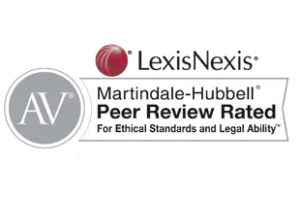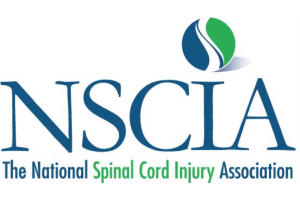Hydroplaning Auto Accidents
Highway and Roadway Water Accumulation and Hydroplaning
Lead to Car, Truck and Motorcycle Accidents
Rainy weather driving poses many unique dangers that increase the chances of serious traffic accidents. Hydroplaning and hydrodynamic drag are two of the most serious dangers presented to car drivers and motorcyclists when they drive in wet conditions. Hydroplaning and hydrodynamic drag result in many automobile and motorcycle accidents because they can cause a sudden change in the vehicle’s speed and/or direction of travel. Moreover, hydroplaning and hydrodynamic drag can cause the driver to lose some or all steering or braking function thereby resulting in a loss of control over the vehicle.
What Is Hydroplaning and Hydrodynamic Drag and How Do They Occur?
“Hydroplaning” (also called “aquaplaning”) occurs when water causes one or more tires of a vehicle to lose total or partial contact with the road surface. As a result, braking, steering and other driver inputs are rendered ineffective thereby causing a loss of control until the tire regains sufficient direct contact with the pavement. In effect, hydroplaning is the result of a layer of water creating a barrier between the tire and road surface thereby causing a loss of traction. This water barrier develops when the tread is unable to channel or dissipate water away from the tire quickly enough to avoid the creation of a wedge of water at the leading edge of the tire which, when enough water pressure is generated, causes the tire to be lifted up from the road.
“Hydrodynamic Drag” occurs when the tires on just one side of a vehicle are suddenly slowed down (relative to the other side) as they enter or pass through an accumulation of water which is only located on that side of the vehicle or is relatively deeper on that side of the vehicle. Hydrodynamic drag will cause the vehicle to jerk or be pulled toward the direction where the water accumulation or deeper part of the water accumulation is located. This can cause an accident in one of two ways. First, the vehicle can leave the roadway, strike another vehicle, or collide with a stationary object when it is pulled toward the water hazard. Second, the driver can cause an accident during an “over correction” to the other side.
Georgia Hydroplane Auto Accident Attorneys
Attorneys at Ragland Law Firm, LLC have investigated and handled numerous wet weather auto accident cases where rainy conditions, water accumulation, excess water flow or some other water hazard contributed to the crash of a car, truck or motorcycle. They are knowledgeable about the various legal claims that can be asserted against the parties who may be responsible for causing or failing to address the water hazard that led to the hydroplaning auto accident. In every case where a serious injury or death arises from an inclement weather motor vehicle accident, an immediate and thorough investigation should be conducted to determine whether and to what extent a water hazard or hydroplaning event caused or contributed to the crash of the car, truck or motorcycle involved. The Atlanta-based attorneys at Ragland Law Firm, LLC are qualified and ready to conduct these types of investigations, and to pursue civil claims against the at-fault driver and/or other parties whose negligent conduct may have contributed to causing the water hazard and resulting hydroplaning involved in the accident.
What Are the Risk Factors for Hydroplaning
The likelihood, duration and severity of hydroplaning will depend upon three primary factors: (1) vehicle rate of speed, (2) amount and flow of water, and (3) condition of the tires (primarily tread quality and depth). As a general rule, the deeper the water hazard, the lower the tire tread depth, and the higher the vehicle speed, the greater the chance of a hydroplaning accident. Though the risk of hydroplaning increases at higher speeds, hydroplaning can and does occur even at speeds as low as 35 mph. Likewise, though deeper or faster moving water increases the risk of hydroplaning, even a thin layer of standing or slow moving water can cause hydroplaning, especially at higher speeds or when the tires are worn and tread depth is low. Other factors known to also influence the risk of hydroplaning include: tire pressure, the type and efficiency of the tire tread design, the width of the tire (narrower tires are less vulnerable to hydroplaning), the distance the tire travels through a water hazard, vehicle weight, water composition, use of cruise control, and the type of road surface involved. In sum, deeper water, lighter vehicles, wider tires, more tire wear, inadequate tire pressure, less efficient tire tread designs, use of cruise control and greater vehicle speed are all factors which positively affect the likelihood and severity of a hydroplane event.
Use of Cruise Control on Wet Roads Increases the Risk of Hydroplaning Accidents
The chances of a hydroplane auto accident are greatly increased when the cruise control is activated. Cruise control should never be used during rainy or wet conditions. Unfortunately, automakers have failed to provide warnings and most motorists are unaware of the dangers associated with using cruise control during inclement weather.
Cruise control enhances the dangers of hydroplaning in two ways. First, the primary response to any hydroplaning event is for the driver to immediately reduce speed (without applying brakes) by taking their foot off the accelerator. If a driver has to first disengage the cruise control, their ability to quickly react and reduce speed will be compromised. Second, cruise control will actually cause the vehicle to automatically accelerate when hydroplaning occurs. Such acceleration is exactly the opposite of what should take place in response to a hydroplane emergency. This occurs because hydroplaning causes a loss of traction when water lifts the tires off the pavement which in turn triggers the cruise control to apply more gas to the engine. This automatic acceleration in response to hydroplaning is what makes the use of cruise control during rainy weather so very dangerous.
Poor Tire Maintenance Contributes to Hydroplaning Hazards
Many wet weather accidents are the result of tires that were underinflated or poorly maintained. In particular, the quality and depth of tire treads plays a key role in the occurrence of hydroplaning accidents. The risk of hydroplaning is much greater in cases of a worn tire with insufficient tire tread depth. The primary purpose of tire treads is to channel rain and snow away from the tire so that it will remain in direct contact with the road surface. As a tire rotates, the tread grooves are designed to constantly “push” or channel water away from the tire. However, as speed and the amount of water increase, the treads may not be able to prevent a wedge of water from building up in front of the tire. When this occurs, the tire may rise on top of the water and cause hydroplaning. The lower the quality or depth of the tire tread, the more likely this hydroplaning phenomenon is to occur.
Holding Individuals and Companies Liable for Hydroplane Accidents Caused by Poorly Maintained Tires
Because of the role tires play in causing a vehicle to hydroplane, it is very important that owners and drivers of cars and trucks properly maintain their tires and timely replace them when tire tread depths become unsafe. In fact, both Georgia and federal law mandate certain tire tread depths for cars and trucks. By statute in Georgia, tires on all passenger vehicles must have a minimum of at least 2/32 inch tread measurable in all major grooves, and all school buses and commercial vehicles must have a minimum of at least 4/32 inch tread measurable in all major grooves on the front tires. O.C.G.A. § 40-8-74(e). These minimum standards for buses and commercial vehicles are also part of federal regulations at C.F.R. § 393.75(b). Critically, these are legal requirements which establish only a bare minimum standard for safety. Many experts believe that tires on cars and trucks should be replaced when tread depth reaches 5/32 inch. Most new tires have tread depths of 10/32 inch, so replacement is advisable when about one half of the tread has been worn away.
Individuals and companies can be held liable in personal injury and wrongful death lawsuits when worn tires they failed to replace contribute to causing a hydroplane truck or automobile accident. Drivers and owners of cars have a legal duty not to use badly worn tires which are unsafe and increase the risk of hydroplaning. Likewise, trucking companies and other corporations which own and use trucks or fleets of cars are responsible for making sure tires are properly maintained and replaced when tread depths reach unsafe levels. If a company is negligent in its policies and practices relating to the inspection, maintenance or replacement of tires on trucks or vehicles it owns or allows its employees to drive, then it can be held liable for injuries or deaths arising from hydroplane accidents caused by that company’s worn or unsafe tires.
Hydroplane Accident Lawsuits Based upon the Negligent
Design, Construction or Maintenance of a Road, Highway or Intersection
Many hydroplane accidents take place because the road, highway or intersection was poorly designed, improperly constructed, or negligently maintained. Highway design flaws, bad road construction and/or poor maintenance of gutters or drainage systems can result in excess water flows or water accumulations which present hydroplaning hazards to the public.
The Georgia DOT, county governments and any engineering companies they employ have a duty to design roads, highways, bridges and intersections so that they will effectively drain away water and not allow hydroplane hazards to develop during heavy rainfalls. In certain circumstances, government agencies and their outside engineers can be held liable when a car or truck hydroplanes because of a water hazard that resulted from road design defects. If that water hazard existed because a road contractor failed to follow all design specifications or was otherwise negligent in its highway construction, it too can be held liable for injuries or deaths suffered in a hydroplane accident. Finally, roads and highways (including all gutters, ditches, drains and similar features) must be regularly inspected and properly maintained to ensure that excess flows or accumulations of water do not develop. When adequate inspections (sometimes called “storm patrols”) or proper maintenance are not performed, the negligent governmental entities or other responsible parties can sometimes be held accountable for resulting hydroplane accidents.
Potential Legal Claims and Responsible Parties in a Hydroplaning Accident Lawsuit
There are a number of potential claims to be asserted against various parties who could be to blame for causing a car, truck or motorcycle accident involving a water or hydroplane hazard. In every hydroplane accident lawsuit, these are the parties who may be culpable and these are the possible legal claims which could be asserted against such potential defendants:
- The driver of the hydroplaning vehicle for his negligence in driving too fast and/or losing control of his vehicle.
- The individual driver or owner of the hydroplaning vehicle for his negligence in using worn tires with shallow tread depths.
- The employer of the driver of a hydroplaning vehicle (via vicarious liability) for the employee’s negligence in driving too fast, losing control of the vehicle, and/or using worn tires.
- The government entity and/or private company responsible for the negligent design of the street, road, highway or intersection which did not adequately drain or remove water thereby allowing puddles to form in a particular spot or excess water to accumulate in an area generally.
- The government entity and/or private company whose failure to follow design specifications or other negligent construction resulted in water hazards which caused a hydroplaning accident.
- The government entity and/or private company which was negligent in its responsibility to repair or maintain the street, roadway or highway (including any gutters, drains or other mechanism to remove water) where such negligent repair and maintenance allowed water to accumulate and create a hydroplane hazard.
How To Avoid a Hydroplane Car or Motorcycle Accident
Driving in wet or rainy weather is a common occurrence and for most people, it is a necessity which cannot always be avoided. Unfortunately, driving in the rain poses a constant risk of encountering water hazards and facing the dangers of hydroplaning. Here are some suggestions for reducing the chance that you will be involved in a car or motorcycle accident caused by hydroplaning:
- Slow down – Speed directly affects the likelihood and severity of hydroplaning. Speed reduction should be in proportion to the presence of water. The harder it is raining or the greater the amount of water on the roads, the more a driver should reduce the speed of their car, truck or motorcycle.
- Remain alert and avoid areas of water accumulations – Rainy weather driving requires focused attention and constant lookout for any water accumulations which may present potential hydroplaning hazards. If possible, avoid puddles, heavy flows of water, or areas of water accumulation. If these cannot be avoided, a driver should reduce his speed further as he approaches or drives through any area of water accumulation or significant water flow.
- Keep your distance – On wet roads, keep plenty of distance between your vehicle and all other vehicles around your vehicle. Such space may be needed to bring a vehicle under control in the event of hydroplaning.
- Drive on the inside lanes – water is more likely to accumulate on or near the outside lanes. Therefore, during rainy weather, it is better to drive on inside lanes.
- Do not use worn tires – Low tire treads greatly increase the risk of hydroplaning. Replace and maintain tires regularly so that the treads can perform as designed, to channel water away from the tire and reduce the risk of hydroplaning. Some experts recommend that tires be replaced when the tire tread falls below 5/32 inch. Georgia law requires that tire treads measure at least 2/32 inch.
- Make sure all tires are properly inflated – Underinflated tires also increase the risk of hydroplaning. Regularly check tire pressure to make sure all tires are properly inflated.
- Purchase tires with good tread design – Not all tires are created equal. Many tire models have better tread designs that are more effective in channeling water and reducing the risk of hydroplaning. Consider using only tires with effective water traction designs.
- Do not use cruise control during inclement weather – Use of cruise control during wet conditions is very dangerous because it can accelerate the vehicle during a hydroplaning event. Cruise control should never be used when it is raining or there is any risk of hydroplaning.
How to Respond to a Hydroplane Emergency
Even when all of the above recommendations for avoiding the risk of hydroplaning are followed, any driver in rainy conditions can still experience a hydroplane emergency. Knowing what to do when a car, truck or motorcycle beings to hydroplane can determine whether an accident takes place or is avoided. Here is what most experts say a driver should do and not do as soon as they believe their vehicle has begun to hydroplane:
- grip and hold the steering wheel straight – do not attempt to turn the vehicle while it is hydroplaning
- stop all acceleration – gently lift your foot off the accelerator
- avoid braking until the vehicle has slowed or the tires have again gripped the road.
As a general rule, any drastic or sudden braking, steering or other driver inputs while a vehicle is hydroplaning are more likely to make the situation worse. Therefore, a driver should not attempt any significant maneuvers until the speed has been markedly reduced or the hydroplane has ended. After the speed has been decreased, a driver can try lightly “tapping” the brakes in an effort to help the tires regain better contact or traction with the road. However, the driver should never “slam” on the brakes. If immediate braking is absolutely necessary to avoid a collision, the driver should use a light “pumping” action in an effort to avoid skidding. However, if the vehicle has anti-lock brakes, the driver can brake normally.
Consult with a Qualified Atlanta Car and Truck Accident Lawyer
Individuals involved in auto and motorcycle accidents caused by hydroplaning may have viable legal claims against the individuals or businesses responsible for creating or failing to correct the water hazards or conditions which contributed to that hydroplane accident. Such culpable parties could include the Georgia DOT, county government agencies, highway road contractors, construction companies, builders, or land owners. Contact us if you believe that your hydroplane accident was caused by a negligent driver or that another party was to blame for the water accumulation or excess water flow that created the hydroplane hazard. We are available to consult with you about pursuing a personal injury or wrongful death lawsuit against any culpable individuals, businesses or government entities.









